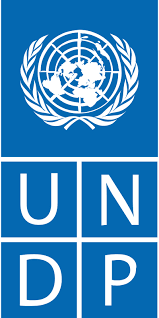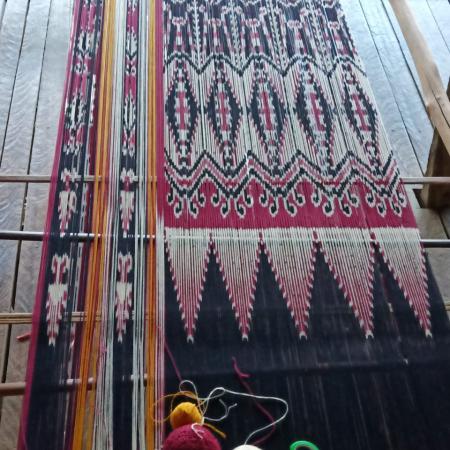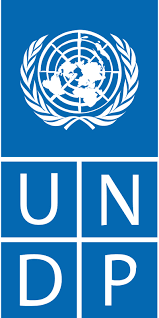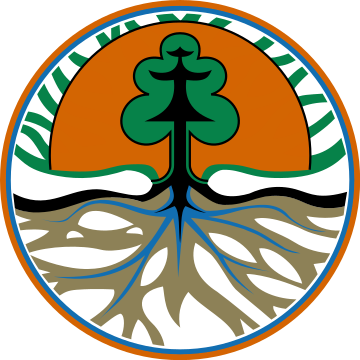
Strengthening Forested Area Planning and Management in Non-State Forest areas in Kalimantan

The Strengthening Forest Area Planning and Management in Kalimantan (KalFor) project - a joint initiative implemented by Indonesia’s Directorate General of Forestry Planning and Environmental Management and the Ministry of Environment and Forestry, supported by UNDP Indonesia and funded by GEF - aims to preserve Kalimantan’s forests in Non-State Forest Areas.
KalFor addresses the challenge of aligning estate crop development with forest conservation, focusing on land management and biodiversity in the Heart of Borneo area while providing communities in these areas with alternative sustainable livelihood opportunities. It aims to reconcile development goals with commitments to reduce deforestation, biodiversity loss, and GHG emissions.
The strategy involves identifying key areas and testing forest management approaches to harmonize environmental and economic objectives in Kalimantan, with implications for similar challenges across Indonesia.
Context
Challenges addressed
Managing Indonesia's non-state forest areas presents significant challenges. Diverse stakeholder interests and expectations lead to difficulties in achieving consensus. Local decision-makers may renege on commitments, contributing to instability. Legal ambiguities in some forested regions complicate management. Economic interests typically overshadow environmental and social benefits, creating a conflict of priorities. Local government incentives are crucial for forest conservation but are challenging to implement; besides, private sector pressures for economic activities conflict with conservation goals.
Variations in local community values and development priorities, including landscape differences, further complicate effective management. The scattered distribution of these areas across Indonesia's remote regions makes management logistically difficult and expensive.
Location
Process
Summary of the process
The active involvement of various parties in diverse forest conservation activities within Non-State Forest Areas (APL) plays a pivotal role in ensuring the sustained enforcement of issued regulations. Given the potential turnover of government officials, the oversight role of these stakeholders is paramount in the ongoing preservation of forests in APL.
These stakeholders are also provided with high-quality data (e.g., forest coverage in APL, potential for Non-Timber Forest Products, economic valuation of ecosystem services, and more). This data instills greater confidence in the government's policymaking process, meanwhile fostering collective motivation among local communities.
Armed with robust data, communities can further their economic pursuits while concurrently safeguarding forested areas within APL. Moreover, the sustained success of incentive mechanisms, like the Ecological Fiscal Transfer initiated by local governments, necessitates ongoing support from stakeholders. Additionally, forging partnerships with the private sector assumes significance, serving as an integral aspect of corporate responsibility toward biodiversity conservation alongside community endeavors.
Building Blocks
Strategic Stakeholder Engagement in APL Forest Management
The Kalfor project addresses the Management of Kalimantan's APL (Non-State-Owned Forest Area) forests, threatened by conversion to palm oil plantations. With jurisdiction over these lands contested among various ministries and no specific legislation for their protection, Kalfor recognized the need for wide stakeholder engagement. This approach involves educating and building consensus among government agencies, local communities, private sector, and academia about the ecological and economic benefits of conserving APL forests.
Enabling factors
Key to this process has been a multi-stakeholder consultation approach, involving diverse groups from government, private sector, civil society, and academia in the development of new regulations. Flexibility in strategy, adapting to political changes, and leveraging local initiatives based on stakeholder interests have been crucial. In Central Kalimantan, for example, Kalfor's adaptable approach facilitated the endorsement of two Governor Decrees for forest conservation.
Lesson learned
Kalfor's experience highlights the importance of building strong, wide stakeholder ownership and commitment at all levels. While the project has surpassed its goal of legally protecting over 644,374 ha of APL forest, challenges remain. Pursuing strategic conservation, especially prioritizing high conservation value forests and ensuring their intactness, is still an ongoing task. At the village level, integrating APL forest management into local development plans has proven effective in aligning conservation with community economic and cultural goals. The project demonstrates that in a complex political, economic, and legal landscape, fostering stakeholder engagement and adaptability is key to successful forest conservation.
Quality Data for APL Forest Protection
For APL (Non-State-Owned Forest Area) forests, lacking legal protection and reliant on voluntary conservation, quality data on forest cover is crucial. The Kalfor project addressed the need for accurate forest cover data in APL areas. Initially, the existing data was unreliable. MoEF through KalFor facilitation, improved data accuracy using high-resolution remote-sensing from LAPAN collaborating with provincial universities This revised data, showing a total HCVF area of 347,922ha in four districts, provided a solid foundation for decision-making and highlighted the project's commitment to accuracy and empirically-driven, evidence-based practice.
Enabling factors
University partners played a key role in deepening knowledge, classifying APL forests by High Conservation Value (HCV) types, and mapping different areas. This scientific approach boosted stakeholder appreciation for forest conservation. Kalfor's role as a bridge between academia and governments facilitated informed, long-term decision-making, enhancing institutional capacity.
Lesson learned
Kalfor learned that while quality data is vital in convincing stakeholders of conservation needs, it's not sufficient alone. Decision-making often overlooks conservation values, focusing instead on other interests. Emphasizing the limited scope of remaining APL forests and their vulnerability to conversion is crucial. Real-world impacts of this approach include East Kalimantan's use of geospatial data and Ketapang district stakeholders' engagement in forest cover analysis. Accurate data reporting on regulatory impacts and socio-economic outcomes is essential for comprehensive forest protection and project evaluation.
Sustainable Alternative Revenue from APL Forests
Recognizing the ongoing threat of APL forest conversion by the palm oil sector, Kalfor identified the need to develop sustainable alternatives for revenue generation, employment, and livelihoods. Despite conservation efforts, only 56% (197.152 ha) of APL forests in four pilot districts have enhanced legal protection, leaving the majority at conversion risk. The project emphasizes finding sustainable uses for these forests that offer economic incentives for conservation.
Enabling factors
Exploring non-timber forest products (NTFPs) emerged as a promising strategy. Studies conducted in districts like Sintang revealed the profitability of NTFPs, with potential for cooperative management. Training sessions for government and university staff aim to integrate the economic valuation of APL forests into land-use planning. Additionally, Kalfor is exploring support for larger-scale NTFP enterprises, utilizing existing research and collaborations with MOEF, research institutions, and successful NTFP companies.
Lesson learned
The challenge of providing economic alternatives to palm oil production highlights the complexity of balancing conservation with local economic needs. While small-scale community schemes offer benefits, they may not suffice for broader economic growth needs. Understanding the potential of NTFPs and the barriers to their development is critical. Effective incentive structures for NTFP enterprises and integrating their benefits into regional planning are key steps. Kalfor's experience underscores the importance of aligning sustainable forest use with economic incentives to ensure APL forest conservation.
Impacts
Overarching impacts:
-
Improving Capacity Building
-
Improving Intensive Communication
-
Improving cooperative learning
-
Improving knowledge exchange
-
Improving mutual learning
-
Improving sharing expertise
-
Improving livelihoods
-
Empowering Women, Local Community & Youth
Sintang: Facilitated forest area management by implemented policy, resulting in protection and sustainable management of>56,000ha of APL forests, and Protecting High Conservation Value areas inside concession permits with a total areaof 26,330Ha.
Ketapang: Facilitated collecting data on forest area management by implemented policy, resulting in protection and sustainable management of >39,000ha of APL forests in land-based companies' High Conservation Value areas outside state forest.
Kotawaringin Barat: Facilitated >17,000ha of APL forest protection and established a multi-stakeholder forum; Facilitated Head of District Regulation on Urban Green Open Space with a total area of 2899 Ha; proposal for Grand Forest Space approved by MoEF.
Kutai Timur: Protected >178,000ha of APL forest protection by regent decisions on HCVF in the palm oil company, in a total area of 48.993Ha and remaining forested area proposed to Regional Spatial Planning Revision and Head of District decree, contributing to preservation of significant areas of forest lands, botanical gardens, village-owned forests.
Beneficiaries
Communities in the three provinces—West Kalimantan, Central Kalimantan, and East Kalimantan— specifically within the four designated Districts: Sintang, Ketapang, Kotawaringin Barat, and Kutai Timur.
Sustainable Development Goals
Story

Interwoven ecosystems: Working with local communities in Indonesia’s Kalimantan forests to protect biodiversity and reduce poverty
Recognising that naturally-dyed textiles are in high demand (and thus fetch higher prices) on international markets, weavers from the Ensaid Panjang village started a programme of forest rehabilitation and enrichment by planting and cultivating natural dye-producing plants.
For the weavers in Ensaid Panjang, the products that they weave are not just commercially valuable – they serve as a key link to indigenous traditions and lifeways, including ceremonies and rituals.
Appropriately valuing natural dyes and locally-produced textiles also bolsters the value of the forests they come from. Healthy, thriving forests provide for healthy, thriving communities - preserving biodiversity and traditional cultures simultaneously.
Ensaid Panjang village lies in the Sintang District of West Kalimantan Province. The District is notable for its Bukit Baka Bukit Raya National Park, which was established as a nature reserve in 1978 and is home to over 1,000 species of plants and animals, including vulnerable, threatened, or endangered species such as clouded leopards, orangutans, sun bears, slow lorises, and hornbills.
The primary cause of biodiversity loss is forest destruction and degradation, which began with logging but has recently been exacerbated by forest clearing for monoculture crops.
The Strengthening Forest Area Planning and Management in Kalimantan (KalFor) project is working to protect and maintain forest areas, including the biodiversity and ecosystem functions of Kalimantan’s lowland and montane areas, and prevent their destruction by forest-destroying agriculture.
Finding and promoting alternative and sustainable livelihoods is critical to ensure such lands do not succumb to the monoculture estate paradigm.
The KalFor project, which is supported by UNDP Indonesia, funded by the Global Environment, and implemented by the Ministry of Environment and Forestry (MoEF) of Indonesia, is bolstering the Government's program to preserve the remaining forests in Kalimantan that are outside the state forest zones.













